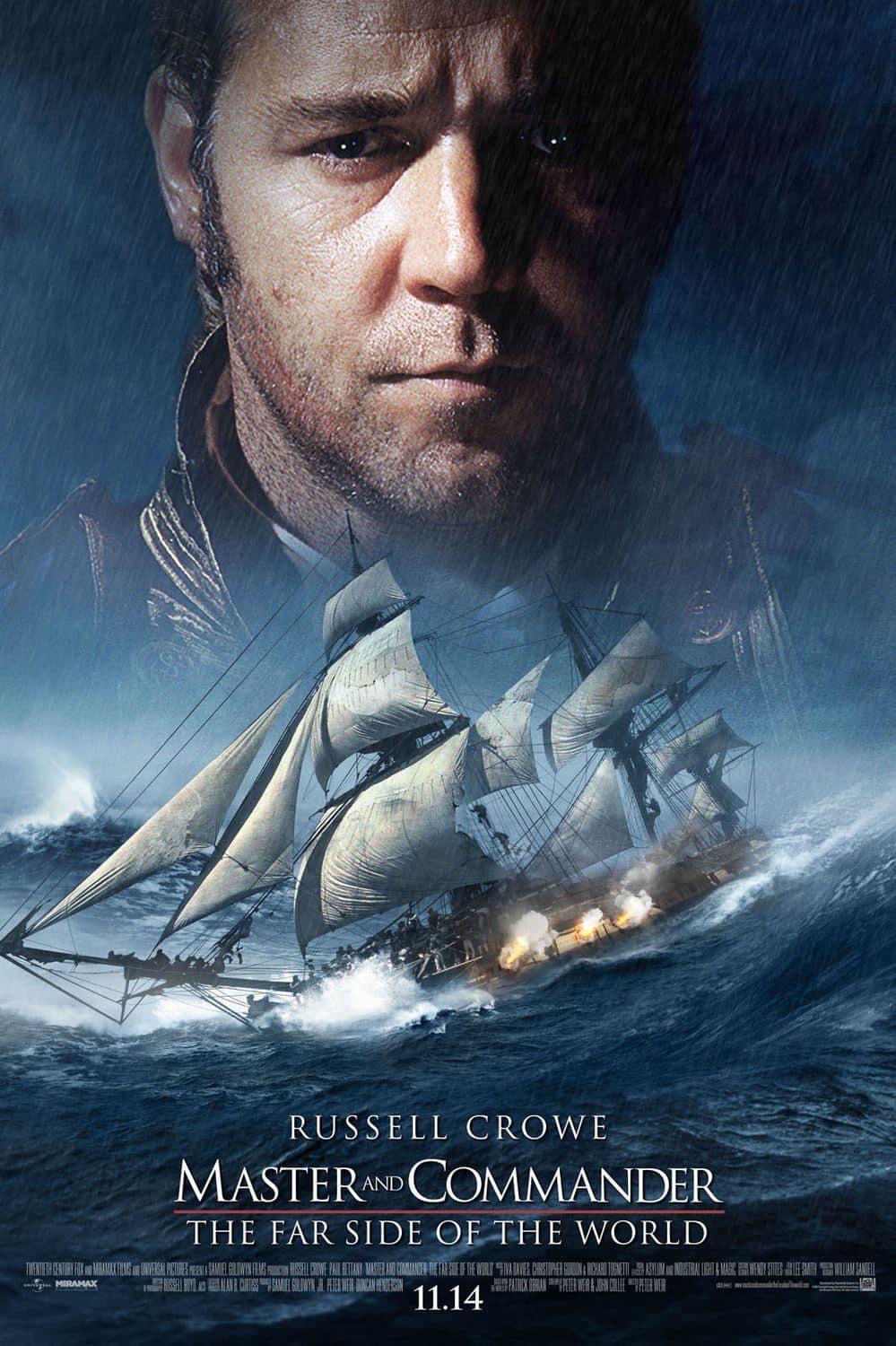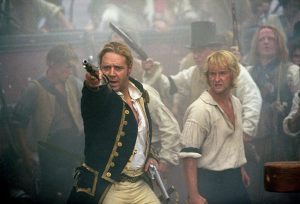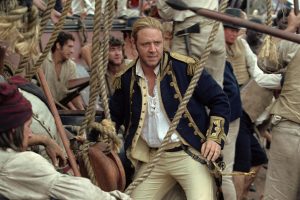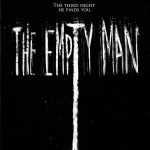Master and Commander: The Far Side of the World (2003)

Master and Commander: The Far Side of the World (2003), directed by Peter Weir and adapted from Patrick O’Brian’s popular Aubrey-Maturin series, stands as a unique achievement in naval and historical filmmaking. The film is set during the Napoleonic Wars and focuses on the high-seas adventures of Captain Jack Aubrey (Russell Crowe) and his friend, the ship’s surgeon Stephen Maturin (Paul Bettany). Weir’s work showcases his meticulous attention to detail and storytelling prowess, resulting in a film that is both epic and intimate. It was nominated for ten Academy Awards, winning for Best Cinematography and Best Sound Editing, and it remains a benchmark in historical drama.
Suggested videos for you:
Plot Overview
The film begins with the HMS Surprise, commanded by Captain Jack Aubrey, receiving orders to intercept the French privateer Acheron as it poses a significant threat to British interests in the South Pacific. The pursuit quickly turns perilous as the Acheron ambushes the Surprise, leaving the smaller, older British vessel heavily damaged. Determined not to abandon his mission despite the odds, Captain Aubrey decides to use cunning, strategy, and his crew’s skills to continue the chase.
The narrative balances the rigors of naval warfare with the rich relationships among the crew, most notably between Aubrey and Dr. Stephen Maturin, who serves as the ship’s surgeon and naturalist. Their friendship is at the core of the story, representing a blend of contrasting ideologies: Aubrey’s militaristic zeal and leadership clash with Maturin’s pacifistic, scientific curiosity. This dynamic is tested as the Surprise navigates not only the dangers of battle but also the harsh and unpredictable conditions of the sea.
Themes and Symbolism
Master and Commander is steeped in themes of leadership, loyalty, and the ethical complexities of command. Captain Aubrey’s determination to pursue the Acheron despite overwhelming odds showcases the theme of resilience. However, it also raises questions about the balance between ambition and recklessness, as Aubrey’s decisions push his crew to their physical and psychological limits. This interplay serves as an examination of the burdens of leadership and the sacrifices required for victory.
The film also delves into the clash between science and duty, as represented by Dr. Maturin’s pursuit of knowledge versus Aubrey’s militaristic objectives. Maturin’s role as a naturalist brings a philosophical depth to the narrative, symbolizing Enlightenment ideals of reason and exploration. His fascination with the Galápagos Islands highlights the idea that life extends beyond war, presenting nature as a force both beautiful and indifferent. The tension between Maturin’s pacifism and Aubrey’s warrior ethos underscores the broader theme of conflict between progress and tradition.
The sea itself functions as a powerful symbol throughout the film, representing the vast, untamed, and often merciless world in which Aubrey and his men struggle to survive. It reflects the unpredictability of fate and serves as a reminder of the thin line between human control and nature’s overwhelming power. The relentless pursuit of the Acheron across different oceans embodies the themes of perseverance and the isolation inherent to naval life.
Visual and Artistic Execution
Peter Weir’s direction and Russell Boyd’s cinematography capture the grandeur and peril of life at sea with stunning authenticity. The film’s visuals are marked by sweeping shots of the ocean and detailed, claustrophobic depictions of life aboard the HMS Surprise. Boyd’s use of natural light, particularly in candlelit interior scenes, creates an immersive and historically accurate atmosphere that enhances the film’s realism.
The attention to detail in production design is impeccable. The ship, rigging, uniforms, and period-accurate instruments all contribute to a meticulously recreated environment that transports the audience to the early 19th century. The immersive sound design and use of actual naval terminology further establish a sense of authenticity, allowing viewers to feel the strain and tension of naval warfare. When cannonballs strike the hull or the wind howls through the sails, the sensory experience is heightened to the point where the audience feels as though they, too, are aboard the ship.
The musical score, composed by Iva Davies, Christopher Gordon, and Richard Tognetti, enriches the film’s atmosphere. The blend of classical music, including pieces by Bach and Mozart, alongside traditional sea shanties, enhances the thematic contrasts between civilization and chaos, order and unpredictability.
Performances
Russell Crowe delivers a powerful performance as Captain Jack Aubrey. He embodies the charisma, authority, and complexity required of a leader who must inspire and command loyalty even in dire circumstances. Crowe balances Aubrey’s unwavering determination with moments of vulnerability, giving depth to a character who could have easily been portrayed as a one-dimensional hero. His ability to show both the burdens of leadership and the joy of camaraderie makes Aubrey a compelling and multifaceted figure.
Paul Bettany’s portrayal of Dr. Stephen Maturin provides the perfect counterbalance to Crowe’s Aubrey. Bettany imbues Maturin with intellectual curiosity and moral conviction, offering a perspective that questions the blind pursuit of war. His chemistry with Crowe is palpable, making their friendship one of the film’s most engaging aspects. The conversations between Aubrey and Maturin, whether light-hearted or contentious, reveal deeper themes about duty, sacrifice, and the cost of command.
The supporting cast, including Billy Boyd as Coxswain Barrett Bonden and James D’Arcy as First Lieutenant Tom Pullings, contribute strong performances that flesh out the community aboard the Surprise. Each character is portrayed with a sense of individuality, showcasing the diverse personalities and backgrounds that make up the crew.
Pacing and Storytelling
The film’s pacing is deliberate, matching the rhythm of life at sea. While some viewers might find the lack of constant action to be slow, this approach allows for a build-up of tension and a deeper exploration of character. Weir takes time to show the crew’s day-to-day activities, capturing moments of camaraderie and the mundane tasks that sustain life aboard a warship. This attention to detail enriches the narrative and provides context for the stakes involved in battle.
The action scenes are intense and visceral, filmed with a level of realism that avoids romanticizing warfare. The first encounter with the Acheron is sudden and brutal, setting the tone for the high stakes of the chase. Each subsequent battle is strategically significant, reflecting Aubrey’s evolution as a tactician and highlighting the ingenuity required to outmaneuver a superior opponent.
The narrative’s balance between battle scenes and quieter moments—such as Maturin’s exploration of the Galápagos Islands—gives the film a contemplative quality. This duality underscores the idea that life, even in war, is composed of more than just conflict; there is beauty and discovery to be found, even in the most unlikely places.
Criticism and Legacy
Critics praised Master and Commander for its commitment to historical accuracy and its richly drawn characters. However, some viewers noted the film’s slower, character-driven approach as a potential drawback, especially for those expecting a more action-heavy narrative. The film’s dedication to portraying naval life authentically means that certain plot points may seem understated compared to more conventional war films. This focus on realism over spectacle sets the film apart but may not cater to all tastes.
The film’s legacy endures due to its unique position in the realm of historical epics. Unlike many other war films, Master and Commander does not rely on grandiose political statements or epic land battles but instead focuses on the personal, human aspects of warfare. The exploration of leadership, the camaraderie among sailors, and the philosophical musings on nature and war have given the film a lasting reputation as one of the most thoughtful and well-crafted naval films ever made.
Its influence can be seen in later works that emphasize the harsh realities and strategic complexities of life at sea. Despite not having sequels, which were initially considered, Master and Commander has grown in stature over time, often regarded as an underrated masterpiece that has gained a devoted following.
Conclusion’s
Master and Commander: The Far Side of the World is a film that stands as a testament to Peter Weir’s directorial expertise and the power of detailed, immersive storytelling. With outstanding performances from Russell Crowe and Paul Bettany, the movie transcends the typical war film mold to become a deeply human exploration of leadership, friendship, and the relentless spirit of adventure.
Its richly layered themes, stunning visuals, and commitment to historical authenticity make it a standout in the genre of historical drama. While it may not cater to audiences seeking fast-paced action, those who appreciate character-driven storytelling and the intricate depiction of life on











